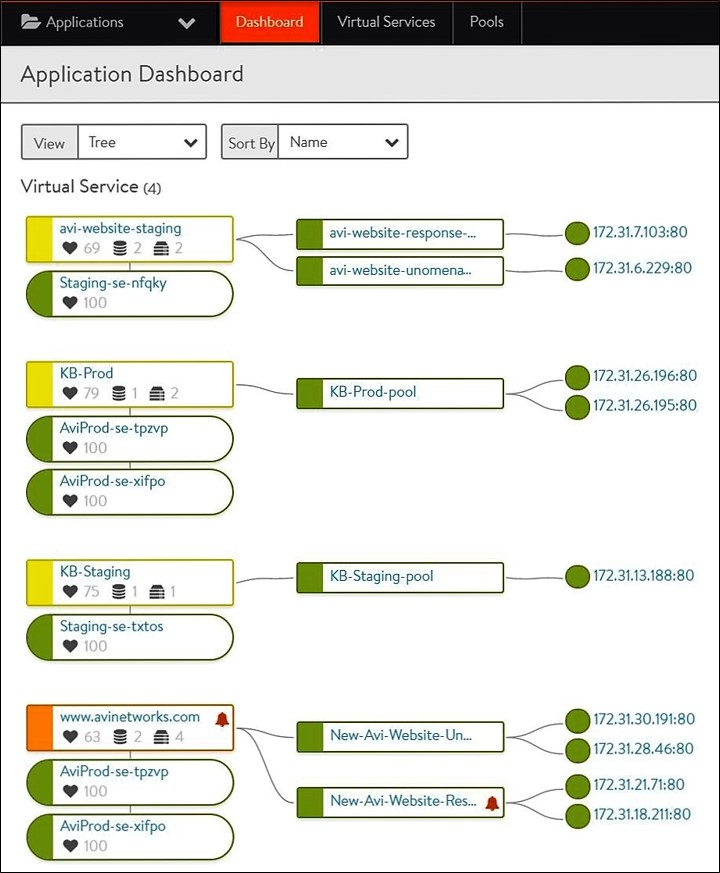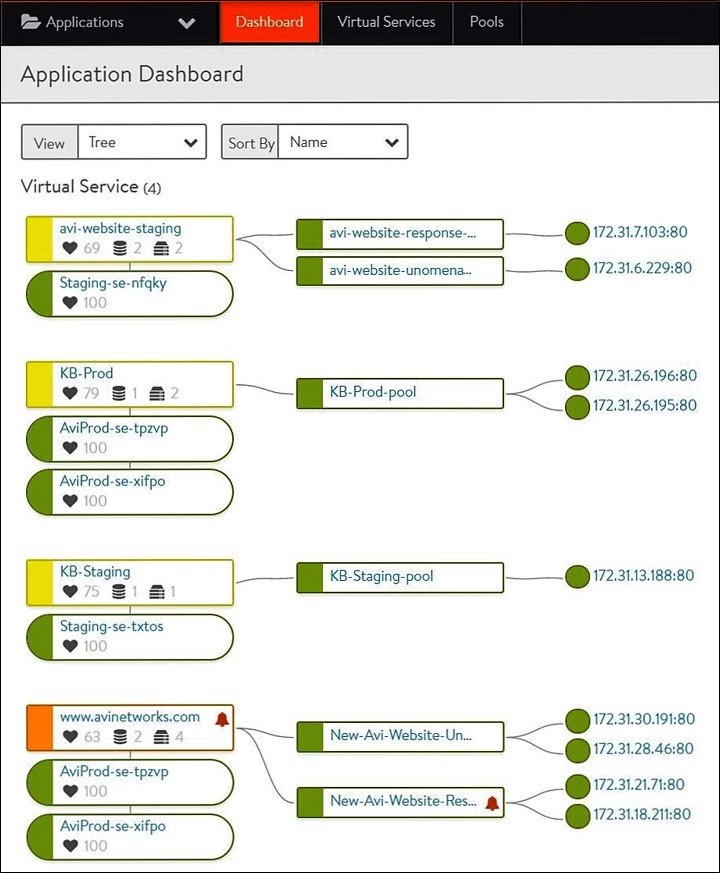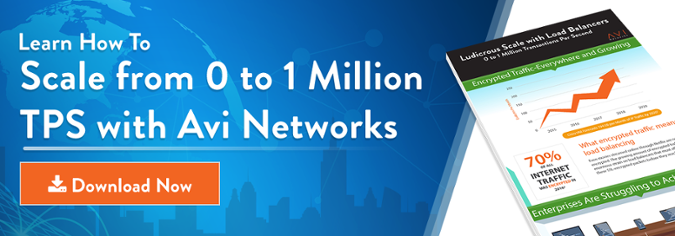Humans are compulsive comparers. We have a natural propensity to view things in our day-to-day lives by setting them against each other. It helps us to choose the most desirable option, prevents us from getting ripped-off, or even fuels our drive to innovate and improve. Let me touch on that last benefit conferred by our urge to compare. Last week, my colleague Rob Duncan waxed eloquent about the characteristics of IT champions at many enterprises. These champions exemplify Gartner’s Mode 2 IT behaviors by innovating with new technologies and IT practices. They compare their status quo to choices that can position their organizations to better compete in their industries by compressing time-to-market, lowering costs, and improving their responsiveness to internal customers. So, we asked a few of our customer champions about comparisons that drove their decisions for application delivery and services and their choice of the Avi Vantage Platform. Across the board, a few common themes came up when they described how they were able to shift focus from the tactical, task-oriented handling of appliances to the much more strategic approach of managing applications.
HARDWARE vs. software
In a now famous article in the Wall Street Journal written nearly five years ago, Marc Andreessen argued, “why software is eating the world.” This is certainly ringing true for dynamic data centers and clouds where the computing model is more fluid than ever. Hardware load balancers have been the staple of application delivery services in data centers for the last two decades. However, they have become inflexible in the face of growing requirements for agile services in application-centric businesses. Virtual appliances inherit most of the architectural debt and are no better at solving many of the fundamental issues with appliance-based ADCs in modern data centers and clouds. Enterprises want nimble application services that match their continuous integration and development (CI/CD) practices. Advances in the power of generic x86 servers are enabling Web-Scale IT principles to be applied to load balancing solutions. The Avi Vantage Platform supports multi-cloud environments and provides software-defined application services with infrastructure-agnostic deployments on bare metal servers, VMs, containers, or the public cloud.
Manual VS. automated
If the public cloud taught us one thing, it is that IT infrastructure and services need to be automated to keep up with the speed of business. The agility and the programmability offered by the cloud have enabled developers and application owners to aggressively adopt the cloud, but also gain the leverage to seek those same advantages in-house. Appliance-based ADCs go against these “cloud-like” characteristics by providing no visibility to virtual services, offering very few opportunities to automate, and restricting the scaling of services to the limits of the appliance. The Avi Vantage Platform is designed with software-defined principles to centrally manage load balancers as a pool of distributed resources across environments in data centers or public clouds. It is built with automation and self-service capabilities that enable administrators to provision virtual services in minutes and to scale them dynamically.
Disparate Appliances vs. Centralized Management
Traditional ADC appliances force administrators to manage every appliance as a separate entity. Administrators do not have centralized visibility or control of the load balancing infrastructure. One IT champion described how prior to using Avi Vantage, his team used to create and maintain spreadsheets to keep track of all the virtual services and their associated pool members just to keep their configurations straight. By contrast, the Avi Vantage Platform creates a singular view of load balancing resources across the environment, displaying the graphical relationships between the virtual services and the applications in a consolidated view. Administrators can spin up load balancers in seconds where necessary (even down to a load balancer for every application) and make application-centric decisions to allocate resources or troubleshoot problems.

Configuring Information vs. Generating Insights
Load balancers occupy a critical and privileged position in the network. They sit in the path of application traffic and can offer rich application intelligence. But, appliance-based solutions have mainly focused on the hardware needed to meet throughput requirements. The appliance itself is a black box into which administrators enter configuration or policy information, getting very little application-specific intelligence back from the system. By contrast, due to its software-defined architecture, the Avi Vantage Platform enables separation of duties allowing the Avi Controller to continuously analyze telemetry information sent by the Avi Service Engines (distributed load balancers) and generate a whole host of application-specific insights. The analytics capabilities offered by the platform generate real time intelligence about application performance, security, and end users which in turn drives intelligent autoscaling decisions and actionable feedback for administrators and developers on the Avi Console.
Concentrated vs. Disaggregated Services
Traditional ADCs were designed to address north-south load balancing for monolithic or n-tier application architectures. They sit at the network’s edge as a traffic cop and provide load balancing across multiple downstream applications from a single appliance – it is no wonder that they constantly need expensive upgrades to manage traffic growth. Often times, the busiest application or tenant dictates the capacity that needs to be provisioned. Modern enterprise applications generate a large volume of east-west traffic where workloads and IP addresses can move or change and new virtual machine instances can be spun up or down quickly. Microservices applications based on containers introduce greater disaggregation with the potential for even more east-west traffic. The use of traditional ADCs for these scenarios is expensive and even impractical with inefficient traffic steering to deliver load balancing services. Instead, what if the application services architecture mimics the disaggregated nature of these applications. This is the case with the Avi Vantage Platform, where right-sized load balancers can be placed in the most granular location – per application or per service node (in the case of microservices applications).
support ticket vs. self-service
While describing what he wanted in his desired ADC solution, one of our customers put it simply – he said, I did not want to be a “VIP monkey.” The load balancing team in his company was constantly busy servicing trouble-tickets from application owners to provision new virtual services or make modifications to existing ones. Multitenancy and scaling of services were another set of challenges. He went on to say, “all of this was assuming that new hardware didn’t have to be bought, which added several weeks to the process.” On the other hand, the Avi Vantage Platform delivers self-service provisioning and monitoring of application services with all platform capabilities made available through 100% REST APIs. Multitenancy is easily supported with the distributed architecture. Administrators can enable role-based access to developers to the Avi Console and developers can use APIs to build application services into their applications including dev and test use cases.
Overprovisioning vs. Predictive Scaling
Data from Avi’s customer conversations suggest that on average, traditional ADCs are overprovisioned by more than 70% which means that enterprises are only using up to 30% of the appliance capacity. Often enterprises end up buying much more capacity than they actually need (read related post - “Confessions of a former hardware ADC salesman”). The architectural model of appliance-based solutions forces this behavior as insurance against traffic growth. Instead, what if load balancers or even the applications that they service could follow a completely automated just-in-time scaling approach without any manual intervention? The software-defined model of the Avi Vantage Platform makes such a predictive scaling model possible because the Avi Controller is continuously aware of the application’s health and performance and can automatically spin up additional load balancing resources on commodity x86 hardware, VMs, or containers. The platform goes beyond scaling load balancers to become an “application helper”, scaling application servers using native integrations with third party orchestration tools and controllers.
These were just a few of common comparison dimensions that the IT champions brought up. With all of these advantages, the Avi Vantage TCO savings of greater than 50% over traditional ADCs on average, became an even more compelling comparison for them. So the next time the opportunity presents itself, go ahead and indulge your instinct to compare. Avi Vantage is free to use in development and test environments. Give it a try.



